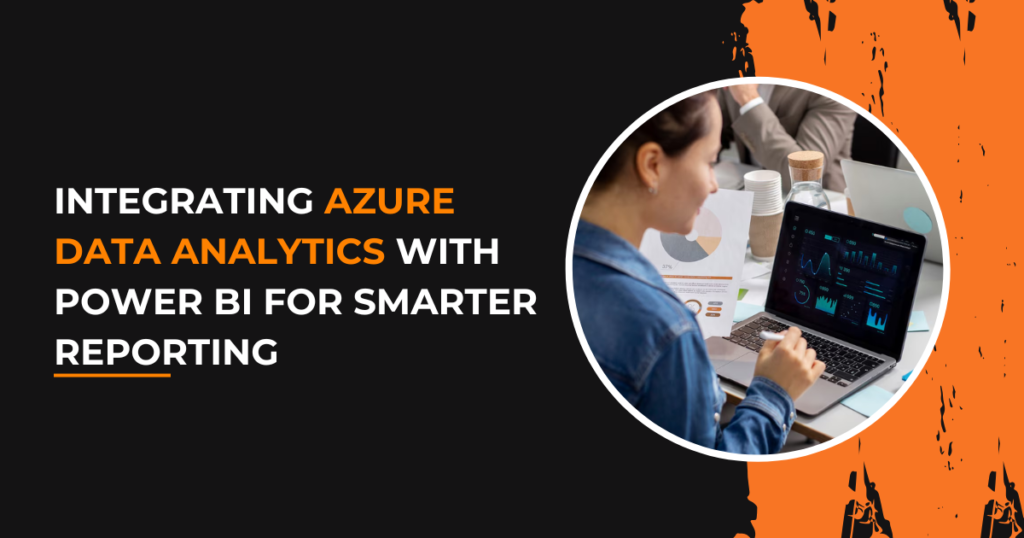
In today’s data-driven world, organizations are increasingly relying on advanced analytics to make informed decisions. Integrating Azure Data Analytics Services with Power BI offers a powerful solution to transform raw data into actionable insights. This article explores how this integration enhances reporting capabilities, improves decision-making processes, and drives business success.
Understanding Azure Data Analytics Services
Azure Data Analytics Services encompass a suite of cloud-based tools designed to handle various aspects of data processing, storage, and analysis. These services enable organizations to collect, store, process, and analyze large volumes of data efficiently. Key components include:
1. Azure Synapse Analytics
Azure Synapse Analytics integrates big data and data warehousing in one platform, allowing seamless querying of structured and unstructured data. It combines the capabilities of Azure Data Lake and SQL Data Warehouse, providing high-performance analytics. Synapse supports on-demand querying and integrates with Power BI, Azure Machine Learning, and other services, enabling businesses to extract actionable insights from diverse data types.
2. Azure Data Factory
Azure Data Factory is a cloud-based data integration service that facilitates data movement, transformation, and orchestration. It enables organizations to create and automate data workflows, allowing data to flow seamlessly between different sources like databases, APIs, and cloud services. With support for ETL (Extract, Transform, Load), ADF helps streamline data preparation and integration for further analysis or reporting.
3. Azure Databricks
Azure Databricks is a cloud-based Apache Spark platform that provides an interactive workspace for data engineers and data scientists. It enables the fast processing of big data and supports advanced analytics such as machine learning and deep learning. By facilitating real-time collaboration in notebooks and leveraging scalable cloud resources, Databricks enhances the ability to build and deploy large-scale machine learning models efficiently.
4. Azure Stream Analytics
Azure Stream Analytics is a real-time data stream processing service that handles high-velocity data from various sources like IoT devices and social media feeds. It processes and analyzes live data, enabling businesses to make timely decisions based on real-time insights. ASA supports SQL-like queries and integrates seamlessly with Azure services, making it ideal for applications requiring instant action on streaming data.
5. Azure Data Lake Storage
Azure Data Lake Storage is a scalable and secure solution for storing massive amounts of structured and unstructured data. It integrates smoothly with other Azure analytics services, making it a central hub for data processing. With its hierarchical namespace and enterprise-grade security features, it ensures efficient data organization, management, and access, supporting businesses in running advanced analytics on large datasets.
The Role of Power BI in Data Visualization
Power BI is a business analytics tool that enables users to visualize and share insights from their data. It provides interactive dashboards, reports, and data visualizations that help organizations make data-driven decisions. Key features of Power BI include:
1. Interactive Dashboards
Power BI enables users to create interactive dashboards that display real-time data and key performance indicators (KPIs). These dashboards offer customized views of critical business metrics, allowing users to monitor performance instantly. With dynamic filtering and drill-down options, users can interact with the data, uncovering deeper insights and making quick, informed decisions based on current data.
2. Data Connectivity
Power BI offers extensive data connectivity capabilities, allowing users to connect to a wide range of data sources, including Azure services, on-premises databases, and cloud-based applications. This flexibility enables seamless integration of diverse data from various systems into one platform. With support for databases, web services, and APIs, users can consolidate data from multiple sources, creating a unified analytics environment.
3. Advanced Analytics
Power BI’s advanced analytics features enhance its data visualization capabilities. With tools for trend analysis, forecasting, and anomaly detection, users can uncover hidden patterns and predict future outcomes. These features help businesses understand data beyond basic metrics, providing deeper insights into trends and potential risks, and allowing for more informed, strategic decision-making based on predictive models.
4. Collaboration and Sharing
Power BI promotes collaboration and sharing, making it easy for teams to work together on data analysis. Users can share reports and dashboards via direct links or embed them in SharePoint or web pages. With real-time commenting and role-based access controls, team members can discuss insights, make changes, and ensure that everyone is aligned with the latest data for better decision-making.
Benefits of Integrating Azure Data Analytics with Power BI
Integrating Azure Data Analytics Services with Power BI offers several advantages:
1. Unified Data Platform
Combining Azure’s data analytics capabilities with Power BI provides a unified platform for data storage, processing, and visualization. This integration eliminates data silos, ensuring that all stakeholders have access to consistent and up-to-date information.
2. Real-Time Insights
Azure Stream Analytics enables the processing of real-time data streams, which can be visualized in Power BI dashboards. This capability allows organizations to monitor live data feeds and make timely decisions based on current information.
3. Scalability and Flexibility
Azure’s cloud-based services offer scalability to handle large volumes of data, while Power BI’s cloud service provides flexibility in accessing and sharing reports. This combination ensures that organizations can scale their analytics capabilities to meet growing data demands.
4. Advanced Analytics Capabilities
Integrating Azure Databricks with Power BI allows for the application of advanced analytics techniques, such as machine learning and predictive modeling. This integration enhances the depth of insights derived from data, supporting more informed decision-making.
5. Cost Efficiency
Azure’s pay-as-you-go pricing model ensures that organizations only pay for the resources they use, making it a cost-effective solution for data analytics. Power BI offers a free version with essential features, and its Pro and Premium versions provide additional capabilities at competitive prices.
Real-World Applications
Several organizations have successfully integrated Azure Data Analytics Services with Power BI to enhance their reporting capabilities:
- Retail Industry: Retailers use Power BI to visualize sales data, customer behavior, and inventory levels, enabling them to make data-driven decisions that improve operational efficiency and customer satisfaction.
- Healthcare Sector: Healthcare providers leverage Power BI to analyze patient data, track treatment outcomes, and optimize resource allocation, leading to improved patient care and operational performance.
- Financial Services: Financial institutions utilize Power BI to monitor market trends, assess risk, and analyze financial performance, supporting strategic planning and regulatory compliance efforts.
Best Practices for Integration
To maximize the benefits of integrating Azure Data Analytics Services with Power BI, consider the following best practices:
1. Data Governance
Data governance ensures that data is accurate, consistent, and secure. It involves setting policies for data quality, defining data standards, tracking data lineage, and ensuring compliance with regulations. Implementing strong governance practices helps maintain the integrity of the data used in Power BI, ensuring reliable insights and protecting sensitive information across all analytics processes.
2. Data Modeling
Efficient data modeling optimizes performance and enhances data analysis in Power BI. By using structures like star or snowflake schemas, businesses can streamline their reporting and reduce query times. Proper relationships between tables, accurate data granularity, and pre-calculated measures ensure that reports are responsive and insightful. A well-designed model simplifies querying and supports effective decision-making based on structured data.
3. Automation
Automation simplifies and accelerates data workflows. By using Azure Data Factory, businesses can automate data ingestion, transformation, and loading into Power BI. This reduces manual tasks, ensures timely data updates, and eliminates errors. Additionally, automating the process allows for real-time data integration and efficient management of data refreshes, keeping Power BI reports accurate and up-to-date with minimal effort.
4. Security
Security is crucial when handling sensitive data. Azure offers features like role-based access control, data encryption, and data masking to protect data at rest and in transit. These measures ensure that only authorized users access specific data, maintain compliance with privacy laws, and safeguard business information. Robust security practices prevent unauthorized access and ensure the integrity of Power BI dashboards.
Conclusion
Integrating Azure Data Analytics Services with Power BI provides organizations with a comprehensive solution for data processing, analysis, and visualization. This integration enhances reporting capabilities, enables real-time insights, and supports data-driven decision-making processes. By leveraging these tools, organizations can unlock the full potential of their data and gain a competitive edge in their respective industries.




